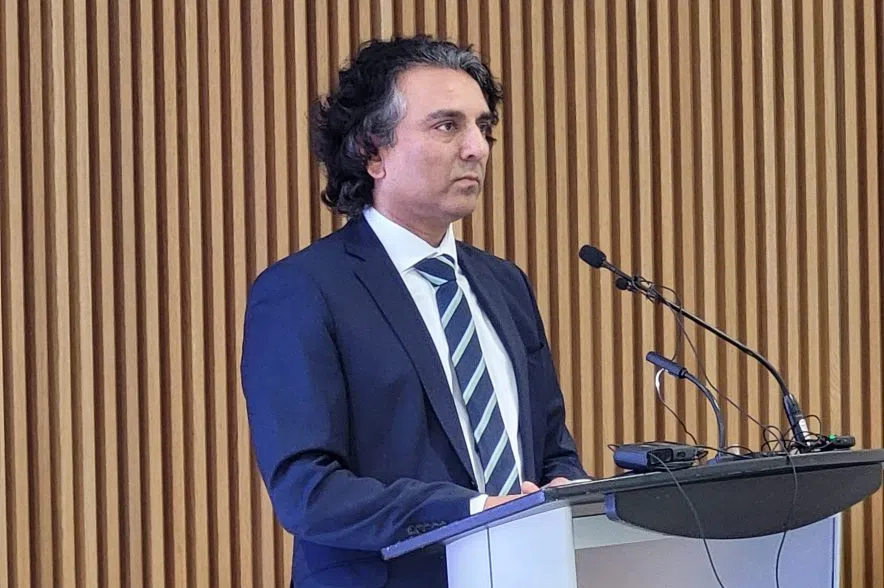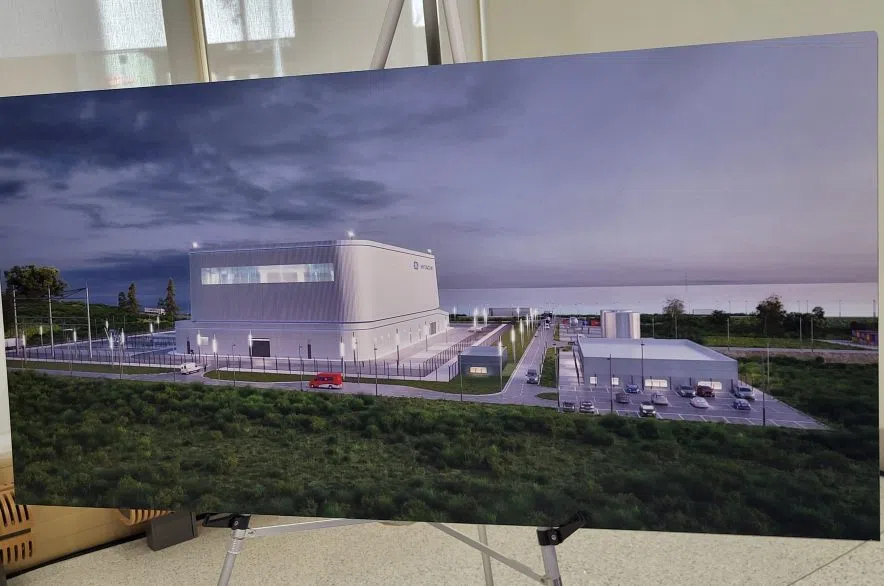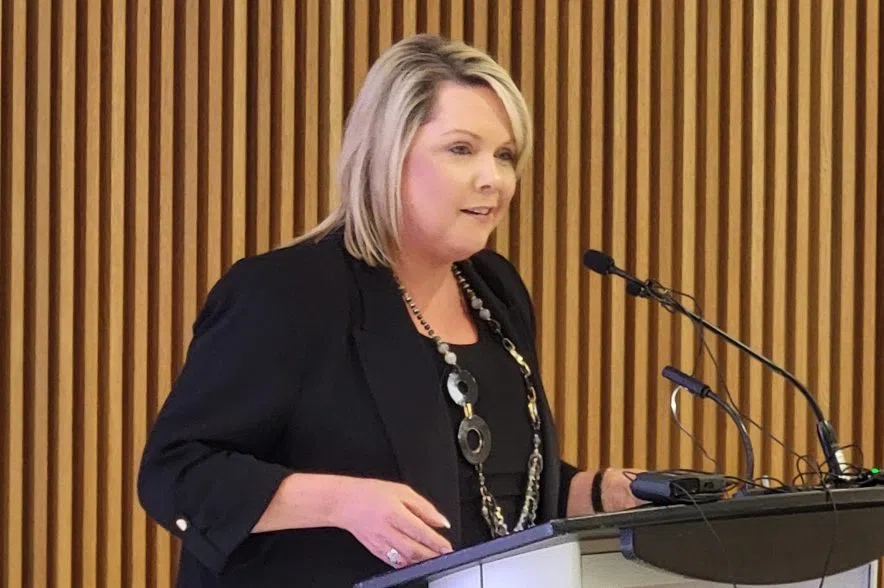An agreement between SaskPower and GE Hitachi might bring the province closer to nuclear energy.
On Tuesday, SaskPower and the nuclear reactor provider signed an agreement to collaborate on project planning for the BWRX-300, which is a small modular reactor (SMR).
“It’s a boiling water reactor. We boil the water, the steam turns the turbine and it’s connected to the grid,” Lisa McBride, country leader of GE Hitachi, said during a media event when asked to describe what the reactor is in simple terms.
“If you think about it, (it’s) essentially like a large kettle.”
McBride added the steam turbine produces the energy.
SaskPower chose the GE Hitachi BWRX-300 in 2022 to advance its SMR project, citing safety, fuel type and cost as reasons for the decision.
The agreement will allow SaskPower to have access to GE Hitachi’s expertise as it pertains to design, fuel sourcing and fabrication for the BWRX-300.
SaskPower also says the agreement will streamline the power and licensing work to inform its decision on whether or not it will go ahead with nuclear power in 2029.
Rupen Pandya, the president and CEO of SaskPower, confirmed the Elbow and Estevan regions have been identified as study regions for project planning.
“We’re in the narrowing phase of finding specific sites within both regions that we can then — along with GE Hitachi and our partners — subject to technical characterization over the course of the next year as we line up to make an impact assessment application,” Pandya said.
“We are in the process right now of securing land for further study.”
Pandya said SaskPower is hoping to make the application in 2025.
How many SMRs are being developed?
The BWRX-300 was also chosen by Ontario Power Generation for its Darlington New Nuclear Project.
While it was announced previously that Saskatchewan and Ontario will collaborate and share resources, Pandya said SaskPower is focused on its first reactor while Ontario is in the process of developing four.
Pandya said current grid capacity is around 5,400 megawatts and SaskPower is forecasting a grid in the 13,000- to 15,000-megawatt range by 2050.
The BWRX-300 produces roughly 300 megawatts from one single unit.
“In terms of non-emitting base-load technology, we’ll need to look at what available technologies (there) are and we’ll need to make those decisions down the road,” he said.
Is Indigenous land being considered?
Pandya said Indigenous partnership will be important to the SMR project, but didn’t definitively say whether or not Indigenous land would be used.
“We have been working along with the First Nations Centre of Excellence and the First Nations Power Authority and the question of how we can use the opportunity of nuclear to further Indigenous economic reconciliation. Whether that is land, labour, equity (or) participation, that is all on the table,” Pandya said.
Fuel and waste
McBride said the BWRX-300 uses GNF2 fuel, which is used in the boiling water reactor fleet today.
“It’s manufactured, it’s certified and it’s ready to go, which is really what helps us meet the desired timelines,” she said.
McBride said waste can be stored safely on-site within the reactor in pools where it comes to a cooling temperature before it’s put into dry casks and then put in a permanent housing location.
“Nuclear Waste Management Organization works closely with licences and utilities for that permanent housing location,” she added.
McBride said the NWMO is looking for a site by the end of 2024 and is down to two potential sites for deep geological repository: South Bruce and Ignace in Ontario.













